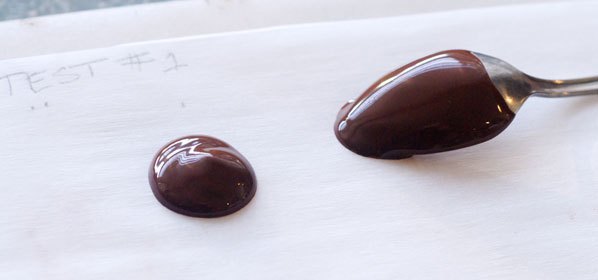The most common issues with chocolate tempering can be solved with these tips and tricks
Do you have difficulty tempering chocolate? When working with chocolate, one of the most common inquiries is, “Why is my chocolate not tempering properly?” You’ll find solutions to common issues with chocolate tempering with our tricks and tips. No one is more aware of how frustrating it can be to work with chocolate than we are! It is literally temperamental. It is extremely sensitive to temperature, humidity, agitation, and other factors! You believe that everything is going according to plan and that you are tempering chocolate correctly, but then you realize that everything has seriously gone wrong. Understanding why your chocolate isn’t tempering properly and how to fix common tempering issues can save you a lot of time and effort.
Tempering chocolate correctly requires a lot of science
What tempering is, why it is necessary, and how to temper chocolate. The most crucial skill for a chocolatier or chocolate maker is the ability to temper chocolate. Before you succeed, you probably will need to put it into practice a lot of times. If you have the money to put into your business or hobby, you will probably buy a tempering machine, which will make your life so much simpler. However, just because you have said machine doesn’t mean you don’t have to learn how to temper. It’s not just about the end result when you learn how to temper chocolate. It’s important to make sure you know how the process works, including the chemistry involved, the steps, what you’re looking for, and why. Advice on how to fix problems with chocolate tempering Having said that, there are a few common problems that could be causing your chocolate to not temper properly. Control the air temperature and humidity in your work area. You will need to modify your tempering to account for the change in room temperature if it was warmer or colder during your practice session. For instance, the quantity of seed required for the seeding procedure; the cooling of the marble slab or cool water bath; and the stability of the warm water bath when attempting to maintain temper. A climate with too little humidity or too much dryness can also affect temper. Yes, humidity control and air conditioning will be essential to your commercial operation. The ideal temperature for working with chocolate in a kitchen or production area is 64-70°F (18-21°C), with 50-65% humidity.
Examine your thermometer. You need to make sure that your equipment is being used correctly and that it is working properly because you are checking very minute temperature changes from one degree to the next. After thoroughly stirring the chocolate mass (not after it has been sitting for some time, as a thick mass will develop hot and cool spots), you will want to take the temperature. As you temper, keep stirring and agitating the chocolate mass. During the process, did you stir the mass frequently? You run the risk of the portion of the mass that is up against the cool marble slab solidifying if you leave it on the slab or in the bowl without stirring. or the chocolate bursting into flames when it comes into contact with the bowl’s scorching bottom.
Again, you need to be careful with the process because we are only talking about differences of one or two degrees. Be careful not to create air bubbles in your chocolate mass. To avoid introducing air, which will result in the formation of air bubbles, carefully stir or agitate using a pull or push motion rather than a whipping motion. When molding, these bubbles can be a big problem. When tempering a non-couverture chocolate, or one with a higher viscosity, air bubbles are more likely to form. Always investigate the chocolate’s viscosity to determine whether it will work better for enrobing or molding (more fluid) or ganache (more viscous). Your chocolate mass should not be over-tempered or over-seed. At the working temperature, as you stir the chocolate mass over time, more V-shaped crystals form, making the chocolate mass thicker and more difficult to work with.
To combat this, you must melt some of the extra crystals in the V-form by either: the addition of warm chocolate heated to 47 degrees Celsius. While you are doing this, be careful not to raise the temperature of the entire mass too much because doing so will cause the chocolate to lose its temper. or by heating the chocolate mass’s edges with a heat gun or hot water. Make certain that the warmed chocolate is thoroughly incorporated into the mass. Is it beginning to become clear to you what we mean when we say that chocolate can be fickle? Wait a minute, there’s more! Your chocolate won’t like to be surprised, so don’t shock it! When the center you are enrobing is too cold or has moisture on it, fat bloom can occur. It can also happen if the wrapped centers are kept in the refrigerator for too long, where moisture and cold can encourage the growth of fat or sugar.
Conduct a rage test. Place a small blob of tempered chocolate on a utensil, parchment, or acetate to harden it before using the mass of tempered chocolate for enrobing or molding. As you work with the chocolate during your enrobing or molding session, don’t forget to periodically conduct a second temper test and agitate the tempered chocolate mass. Now that you have completed your unsuccessful tempering session, the next question is, what should you do with the mass of untempered chocolate? The chocolate can be retempered repeatedly. If you haven’t overheated the chocolate to the point where it could burn in an earlier session and if you haven’t added any foreign substances to it, like water, ganache, or nut bits, the only drawback is that it will be more viscous. Start your subsequent tempering session with new chocolate if you believe the mass was compromised in any way.
To avoid wasting the compromised mass, you can use it in recipes like ganache and truffle centers. Pour the tempered chocolate onto parchment or acetate after you’ve finished working with it and let it harden so you can store it. One of our students pours her excess tempered chocolate into a plastic storage bag with a zipper, seals the bag, and then flattens it out so that it hardens. When you need it, simply break it up into pieces in the bag and pour them back into your tempering machine or bowl to melt. The flat shape makes storage simple. When the chocolate has been tempered, why does the mass sometimes harden with bloom?
When the heat from the center of a large mass of tempered chocolate cannot escape because you are no longer agitating it, the mass can become untempered. As a result, the center keeps its heat and slowly cools. The latent heat of crystallization is to blame for this. When chocolate crystallizes, it releases heat—an exothermic reaction—and can get hot enough to lash out. Additionally, it is essential to cool pieces when they are rapidly crystallizing due to this issue with latent heat. When you see signs of crystallization around the edges of your mold or dipped piece, place it in a refrigerator with good ventilation for about 15 minutes to release that heat and stop the pieces from throwing themselves or each other out of control. Some of the cocoa butter molecules release and either rise to the surface or become trapped in layers during the slow cooling process. If this occurs, don’t worry.
To temper the mass or use it in a recipe, you’ll need to heat it again. The cocoa butter will be mixed back into the mixture by this. To temper untempered chocolate again, you need to melt and solidify all of the unstable crystals that were formed. For dark chocolate, heat the mass of untempered chocolate to at least 115° F (46° C), and for milk or white chocolate, heat it to 110° F (44° C). Note that a slight hint of bloom can also happen if you are molding very thick bars, suckers or 3D shapes and don’t cool them quickly. The tempered, fine, and shiny side will be molded. However, the exposed portion of the chocolate may have faint flecks or rings, which may or may not pose a problem for you. You can work around this issue by filling the mold with layers of chocolate rather than just one pour. Important note: Please check the tempering instructions for the chocolate you are using from the manufacturer. That information can be found on the package or the manufacturer’s website.










